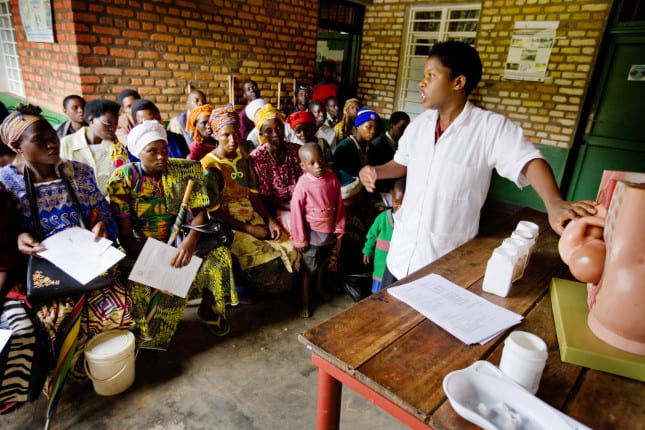
by amk139 | Nov 19, 2023 | Dashboard
Lebanon’s economy witnessed a significant downturn starting in 2018, with its GDP plummeting from $54.9 billion in 2018 to $23.1 billion in 2021. This sharp decline underscored the urgent need for innovative and sustainable solutions to rejuvenate the nation’s economic framework.
The Crisis in Numbers
The financial crisis in Lebanon manifested in various alarming indicators. The country’s GDP annual growth rate took a nosedive from -1.88% in 2018 to a staggering -21.89% in 2020. This drastic reduction pointed towards a severe contraction in economic activities, investments, and consumption. Further exacerbating the situation was the soaring inflation rate, which reached 154.8% in 2020, eroding the purchasing power of the Lebanese people, destabilizing savings, and deepening economic hardships.
Agriculture: A Beacon of Hope
In the midst of this crisis, a potential solution emerged: leveraging Lebanon’s arable land, which constitutes 13.64% of the country’s total land area. Despite a slight increase in arable land over the past decade, the contribution of agriculture to Lebanon’s GDP witnessed a decline in 2020, signaling an underutilization of this vital resource.
Revitalizing Through Agricultural Enhancement
The proposed solution focuses on enhancing agricultural production. This can be achieved by diversifying crop production, adopting modern agricultural practices, and providing robust support to local farmers. Historically, the agricultural sector has received limited attention from credit bank managers due to perceived risks. Therefore, government incentives and subsidies could play a crucial role in encouraging agricultural growth and exports, thereby aiding in job creation and indirectly boosting the country’s GDP.
Sustainable Practices and Unique Opportunities
Lebanon’s diverse geography and microclimates offer a unique advantage for cultivating a variety of crops. The country’s rich agricultural heritage, featuring culturally significant crop varieties, coupled with sustainable farming practices, enhances the quality and marketability of its produce. The export potential of these unique crops holds promise for stimulating economic growth and fostering regional trade cooperation.
Concrete Steps Forward
Findings suggest that Lebanon’s agricultural sector harbors substantial growth potential, which remains largely untapped. Key recommendations include comprehensive agricultural policy reforms, investment in infrastructure, and promotion of sustainable practices. A collaborative approach involving the government, private sector, and international organizations is essential to effectively implement these recommendations.
Conclusion: A Vision for Recovery
Lebanon stands at a critical juncture where investing in agricultural production and harnessing the potential of its arable land can serve as a cornerstone for economic recovery. This strategy not only aims to enhance the country’s food exports and optimize resource use but also addresses the pressing issues of unemployment and GDP growth.
In essence, Lebanon’s journey towards economic resilience can be significantly bolstered by a strategic pivot to agriculture, tapping into the nation’s inherent strengths and fostering a sustainable and prosperous future.

by rii06 | Nov 20, 2022 | Dashboard, Visualization
Children Education is a right!
Did you know?
Even though the average percentage of Children out of school is declining over the years, studies showed that almost 20% of children in low-income countries and 10% in lower middle-income countries are still out of primary school in 2021.
What are these children doing?
The highest % of children in employment is found in the low-income countries, followed by the lower middle-income countries where the highest % of children out of school coexists.
This shows that these countries cannot afford the education of their children and thus shift them to work instead in order to support their families’ living expenses.
Who should we blame?
While these countries have the lowest income, they score the highest birth rates compared to other countries as shown below.
The low-income countries have a 44% birth rate reflected by their ignorance on the importance of birth control and contraceptive prevalence with only 23%.
Is 23% enough? No.
Children have the right to be educated, and a big responsibility falls on the parents who give birth to children and force them to work, knowing that they cannot afford their education.
The access to electricity and internet usage across the years has been increasing in all the countries including the low-income ones.
However, it is important to highlight that with all this increase, only 40% of the population in low-income countries have access to electricity and only 21% of them use the internet in 2020.
This evolution has pushed the adult literacy rate across the years to increase.
The more the adults have literacy and can surf through internet facilities, the more they understand the importance of children education and therefore decreasing the % of children out of school.
The main reason behind the decrease in % of children out of school through years is the increase in education expenditures in primary public institutions, along with the increase in access to electricity and internet usage which facilitates the education feasibility for the children and the adults literacy in these countries.
Knowing that the low-income countries cannot afford the education of their children, while their birth rate is increasing, the Department of Economic and Social Affairs in the United Nations should ensure inclusive and equitable quality education and promote lifelong learning opportunities for all #SDG4 #SDG4.1 by supporting these countries through funding the tuition fees of their children along with educating the parents on the importance of contraceptive prevalence and maybe set regulations in collaboration with the governments to limit the birth rate allowed in the low income countries.

by Karim Ahmad | Apr 14, 2022 | Dashboard, Visualization
“The enemy doesn’t stand a chance when the victim decides to survive.” – Rae Smith
How Is It Justified?
Globally, 1 in 3 women have been subjected to partner violence, and it becomes worst when women consider this violence justifiable. Early marriage is a major reason that women think it’s okay to be beaten up by their spouses, usually, spousal age differences, power inequalities, un-continued education, and a lack of female autonomy are all common features of early age marriages. These factors have been linked to an increased risk of domestic violence and affected women’s awareness of their entitlement, self-esteem, status, and their sense of empowerment.
In most African countries and some Asian countries, women believed spousal violence is justified and that can be linked to high percentages of female adolescents out of school and early marriages in these countries.
Even globally numbers are still worrying, the average number of women who believed a husband is justified in beating up his wife is still Relatively high. With the average number of female adolescents out of school being steady over the past 22 years, marriages at a young age are still taking place and resulting in more domestic violence since spousal age difference can make women more vulnerable to health risks and social Isolation by creating power dynamics. These power dynamics can increase girls’ vulnerability to emotional, physical, and sexual abuse.
According to the WDI (World Development Indicators) data some of the justified reasons for domestic violence were:
- When women argue with the husband
- When she burns the food
- When she goes out without telling him
- When she neglects the children
- When she refuses sex with him
Taking Action!
So, you might ask, what can be done? Well, a lot actually. To start with, empowering young women are essential. This can be done through:
- Enhance girls’ access to a high-quality education
- Empower girls with information, skills, and support networks
- Provide financial assistance and incentives to young women and their families
- Educate and rally parents and the community members
Education is crucial in preventing females from marrying as adolescents. In fact, the longer a girl stays in school, the less likely she is to marry and have children before she toms 18 years old. Furthermore, education ensures that girls have the skills and information they need to find work and support their families. This can aid in breaking the cycle of poverty and preventing child marriages caused by extreme poverty and/or financial gains.
Final Recommendations
Education, economic status, and age gap are the main factors behind early marriages and domestic violence. It’s recommended to Promote education and economic opportunities for girls & Employ behavior change communication and community mobilization techniques to change social norms regarding age and marriage.

by Sara Kaddoura | Apr 14, 2022 | Visualization
Most of us have grown up being taught the importance of education. But why is education important? Through your frustrating school years, you may have thought that it was a waste of time, or was just something that you needed to do in order to get a job. Truth be told, however, education goes so much beyond just getting a job and making your parents happy. In fact, it’s one of the most powerful tools out there.
There are numerous reasons why education is important. In general, they all have a strong connection to a person’s life goals and future well-being. It develops critical thinking, teaches a person how to use logic when making decisions and interacting with people and increases the literacy rate.
Today, the public spending on education increases continuously, but unfortunately not all countries are able to spend on education. Be it because of their economic crisis or their financial situation. There’s always something in the way of keeping people from receiving a proper education, thus a decrease in literacy rate.
This leads to adolescents dropping out of school or not registering at all. According to data from the UNESCO Institute for Statistics (UIS), about 263 million children, adolescents and youth worldwide (or one in every five) are out school – a figure that has barely changed over the past five years.
Taking Action
So, what should be done to resolve this?
– For people who cant afford education fees they can be offered help through NGO’s (Scholarships and free tuitions fees).
– For people who don’t want to go to school/University, awareness campaigns can be offered to them to acknowledge them with the importance of education.
Recommendations
All children should feel equally special no matter their financial situation. Education is vital to build a person’s personality and logic. Through the help of NGO’s and awareness campaigns every child will be able to go to school, get the proper education they need and increase their literacy rate.

by ami31 | May 9, 2021 | Dashboard, Visualization
Childbirth is considered to be a landmark and joyous moment in any woman’s life. And although health experts say that no two childbirth experiences are the same, it is quite astounding that this can, in many cases, reach the extreme of death. According to statistics released by UNICEF, the World Health Organization (WHO), the United Nations Population Division, United Nations Population Fund (UNFPA) and the World Bank Group, around 2.8 million pregnant women and newborns die every year of preventable causes [1]. This turns childbirth into an event to be feared as it poses a significant threat to the lives of many women across the globe. According to the United Nations’ , quality education is defined as one the of the seventeen sustainable development goals (SDGs), so how can education help mitigate childbirth mortality?
“Pregnancy is not a disease. It should not lead to deaths. Every maternal death should be regarded as an abnormality.” – Vivianne Ihekweazu, Director of the Nigerian Health Watch [2]
How are Childbirth Deaths Related to Education?
The World Development Indicators data from the World Bank [3] allows us to look into the impact of education on childbirth by exploring the percentage of births that are handle by skilled health staff. In the figure below, we plot the average life expectancy at birth in years with respect to the average percentage of births attended by skilled staff for each country. There is a clear positive correlation between the two variables. We therefore conclude that children who are delivered by skilled health workers during labor are more likely to have a higher life expectancy.
However, the impact of having educated people overseeing child delivery does not stop here. Unfortunately, carrying out child delivery without proper understanding of the necessary health procedures has more alarming implications. In the dashboard below, we notice a sharp decrease in both maternal mortality (women dying during labor) and neonatal mortality (newborns dying at birth) in countries where more childbirths are handled by skilled health workers. This implies that many of the childbirth related deaths can be attributed to the lack of necessary health skills.
Where are these Childbirth Deaths Mostly Occurring?
Below we find the places that suffer the most from this by selecting the countries that have a below average percentage of births attended by skilled staff.
By looking at the geographical distribution of these countries we unsurprisingly find that the majority is located in Africa. Furthermore, we notice that the educational attainment in these countries is significantly lower than countries that have more professionally handled childbirths. This is an expected causality since to have more skilled people perform childbirth procedures we need more educated people.
So the Solution Is, Educate More People!
“The benefits of education permeate all walks of life right from the moment of birth.” – Irina Bokova, Director-General of UNESCO [4]
In light of the above, we clearly need to have more educated people that are able to professionally handle childbirth procedures. This is especially needed in developing countries where childbirth mortality is more pronounced. A key approach strategy here is to educate the local birth attendants and community midwives that are already active in these communities. These local and community health workers are already more connected to the women and families in their towns making their newly found skills more accessible and allowing them to spread health awareness to pregnant women in their communities [5]. Finally some communities in rural Africa are located in remote locations faraway from any medical supply and service centers. Therefore, setting up portable medical outposts near these towns would greatly enhance the quality of services provided by birth attendants.
References
[2] E. Onyeji, “Despite having highest maternal mortality in Africa, Nigeria’s situation still underreported – Report,”
Premium Times Nigeria, 03-Dec-2020. [Online]. Available:
https://www.premiumtimesng.com/news/headlines/429266-despite-having-highest-maternal-mortality-in-africa-nigerias-situation-still-underreported-report.html.
[3] https://datatopics.worldbank.org/world-development-indicators/
[4] “Education can save lives, help reach sustainable development goals – UN agency,”
UN News, 18-Sep-2014. [Online]. Available:
https://news.un.org/en/story/2014/09/477702-education-can-save-lives-help-reach-sustainable-development-goals-un-agency.
[5] D. Shikuku and C. Ameh, “Investing in midwifery training and education for improved maternal and newborn outcomes,”
On Medicine, 19-Mar-2021. [Online]. Available:
https://blogs.biomedcentral.com/on-medicine/2021/03/19/midwifery-training-education-maternal-newborn-outcomes-isrctn/.




